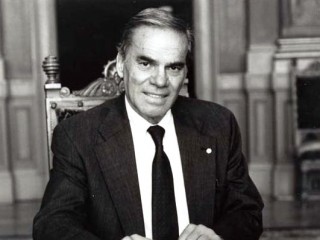
Martin Rodbell biography
Date of birth : 1925-12-01
Date of death : 1998-12-07
Birthplace : Baltimore, Maryland, U.S.
Nationality : American
Category : Science and Technology
Last modified : 2011-09-23
Credited as : biochemist, discovery of G-proteins, Nobel Prize for Physiology or Medicine
0 votes so far
Prior to Martin Rodbell's work, it was believed that a hormone receptor and an interior cell enzyme were responsible for virtually all cellular communication. Rodbell discovered that cellular communications also involved guanosine triphosphate (GTP). Years later, pharmacologist Alfred G. Gilman found that GTP was on the inner surface of cell membranes, where it bound to natural signal transducers -- now called G-proteins -- which which are fundamental to cellular communication. Dozens of specific G-proteins have since been identified, leading to advances in the understanding of numerous diseases, including alcoholism, cancer, cholera, and diabetes. In May of 1994 Rodbell was forced to retire from the National Institutes of Health, due to federal budget cuts that basically eliminated his lab. Five months later he was awarded the Nobel Prize, sharing the honor with Gilman.
Rodbell's wife, Barbara Ledermann, fled Nazi Germany as a child, taking refuge with her family in Holland. Her sister Susanna, nicknamed 'Sanne', became friends with fellow refugee Anne Frank, and is mentioned several times in her famous Diary of a Young Girl. As a teenager, Barbara Ledermann was active in the Dutch Underground, acquiring false ID as a non-Jew and using her false papers to smuggle numerous Jews toward safety. Her parents and sister were incinerated at Auschwitz along with Frank, but Ledermann escaped and eventually came to America, where she met and married Rodbell. Her memoirs of her underground work are in the archives of the U.S. Holocaust Memorial Museum.
















